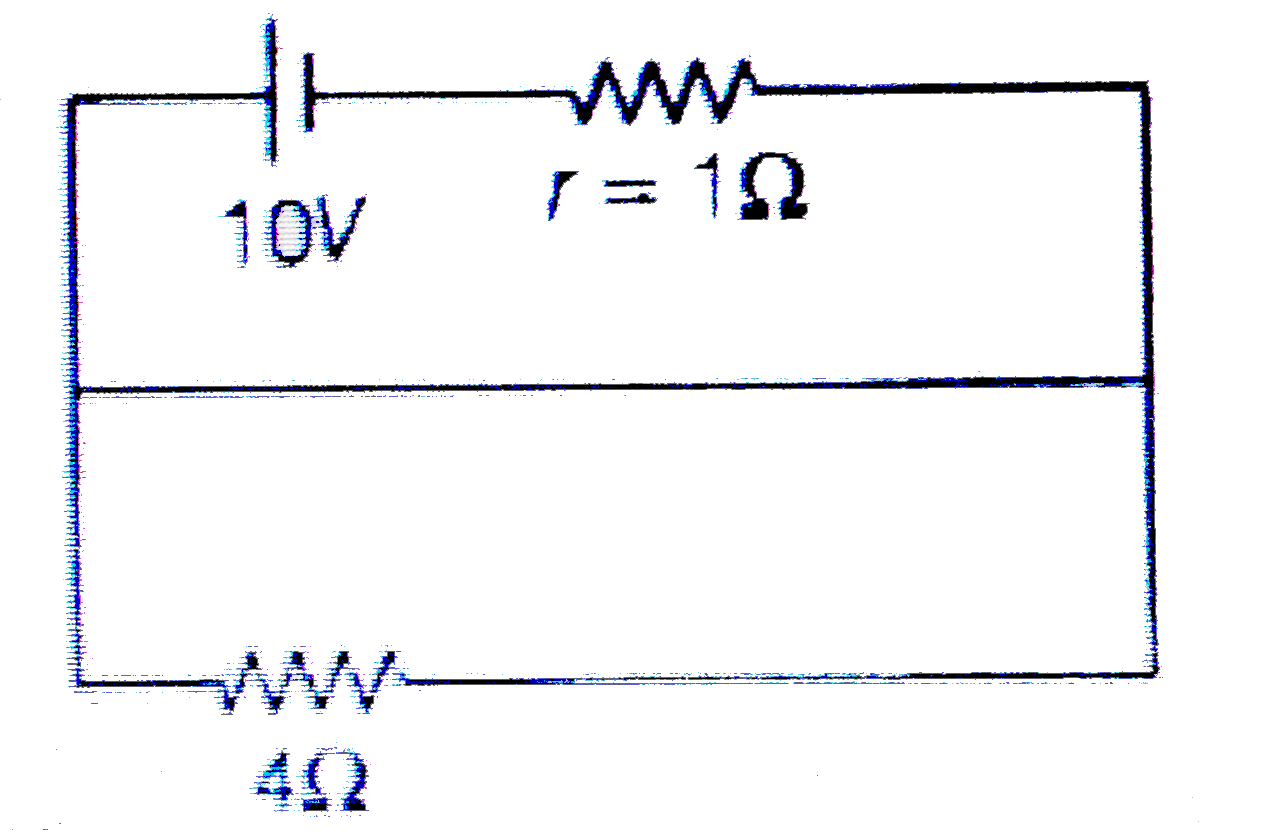What is the relationship between potential difference across the terminals of a cell and emf of the cell ?
To understand the relationship between the potential difference across the terminals of a cell and the electromotive force (EMF) of the cell, we can analyze three different scenarios: an open circuit, a discharging circuit, and a charging circuit.
1. Open Circuit Condition:
- When the circuit is open, no current flows through the cell.
- In this case, the potential difference (V) across the terminals of the cell is equal to the EMF (E) of the cell.
- Equation: V=E
2. Discharging Circuit Condition:
- When the circuit is closed and current is drawn from the cell (discharging condition), the internal resistance (r) of the cell affects the potential difference.
- The terminal potential difference (V) can be expressed as:
- Equation: V=E−I⋅r
- Here, I is the current flowing through the circuit, and r is the internal resistance.
- This shows that the terminal potential difference is less than the EMF of the cell when current is drawn.
- Conclusion: V<E
3. Charging Circuit Condition:
- When the cell is being charged, current flows into the cell, and the potential difference across the terminals is affected by the internal resistance in a different way.
- The terminal potential difference (V) in this case can be expressed as:
- Equation: V=E+I⋅r
- This indicates that the terminal potential difference is greater than the EMF of the cell when current is supplied to it.
- Conclusion: V>E
Summary of Relationships:
- Open Circuit: V=E
- Discharging Circuit: V<E
- Charging Circuit: V>E
- When the circuit is open, no current flows through the cell.
- In this case, the potential difference (V) across the terminals of the cell is equal to the EMF (E) of the cell.
- Equation: V=E
- When the circuit is closed and current is drawn from the cell (discharging condition), the internal resistance (r) of the cell affects the potential difference.
- The terminal potential difference (V) can be expressed as:
- Equation: V=E−I⋅r
- Here, I is the current flowing through the circuit, and r is the internal resistance.
- This shows that the terminal potential difference is less than the EMF of the cell when current is drawn.
- Conclusion: V<E
- When the cell is being charged, current flows into the cell, and the potential difference across the terminals is affected by the internal resistance in a different way.
- The terminal potential difference (V) in this case can be expressed as:
- Equation: V=E+I⋅r
- This indicates that the terminal potential difference is greater than the EMF of the cell when current is supplied to it.
- Conclusion: V>E
- Open Circuit: V=E
- Discharging Circuit: V<E
- Charging Circuit: V>E
Topper's Solved these Questions
- CURRENT ELECTRICITYBook:AAKASH INSTITUTE ENGLISHChapter:CURRENT ELECTRICITYExercise:Try Yourself
Explore 34 Videos
- CURRENT ELECTRICITYBook:AAKASH INSTITUTE ENGLISHChapter:CURRENT ELECTRICITYExercise:ASSIGNMENT(SECTION-A(OBJECTIVE TYPE QUESTIONS))
Explore 69 Videos
- COMMUNICATION SYSTEMS Book:AAKASH INSTITUTE ENGLISHChapter:COMMUNICATION SYSTEMS Exercise:ASSIGNMENT SECTION D (Assertion-Reason)
Explore 10 Videos
- DUAL NATURE OF RADIATION AND MATTER Book:AAKASH INSTITUTE ENGLISHChapter:DUAL NATURE OF RADIATION AND MATTER Exercise:ASSIGNMENT (SECTION-D)
Explore 10 Videos
Similar Questions
What is the relationship between potential difference across the terminalsof a cell and emf of the cell?
View SolutionPotential difference across the terminal of a non ideal battery is
View SolutionFor a cell, the graph between the potential difference (V) across the terminals of the cells and the current I drawn from the cell is as shown in figure. Calculate the e.m.f. and the internal resistance of the cell.

View SolutionFor a cell, a graph is plotted between the potential difference V across the terminals of the cell and the current I drawn the cell. The emf and the internal resistance of the cell are E and r, respectively. Then

View SolutionIn the situation shown , the potential difference across the cell of smaller e.m.f is .

View SolutionIn the situation shown , The potential difference across the cell of smaller e.m.f. is

View SolutionPotential different across the terminals of the battery shown in figure is

View SolutionFor the determination of emf E and internal resistance 'r' of a cell , the graph is obtained between potential difference V between the terminal of the cell against the current l, which was changed by adjusting the rheostat, is as shown . The internal resistance of the cell is

View SolutionAccording to this diagram , the potential difference across the terminals is ( internal resistance of cell =r)

View SolutionAssertion : Potential difference across the terminals of a battery is always less than the emf of the battery.
Reason : During discharging of a battery potential differnce across to terminals of a battery is
V=E−ir
∴V<E
View Solution

